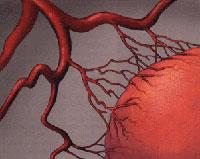Antitumor nanoparticles
Now, a Californian group has released a method based on nanoparticles in the Science issue of March 22. These nanoparticles are attached to a mutated gene that produces apoptosis (cell suicide). The injection of nanoparticles into the tumor causes the death of blood vessel cells, which prevents the tumor from advancing. The gene is called Raf-1, but it is not the only molecule transported by particles.

Using other components, nanoparticles are able to recognize new growing blood vessels. They know some special proteins present in the membranes of the cells of these tubes. These proteins, integrins, can introduce the mutated gene into the cell to launch the mechanism of apoptosis. This theoretically worked strategy has also been implemented by scientists with mice.
They have caused large tumors in mice, they have said, that a person of 80 kilos looked like a two-kilogram tumor. Through this strategy, through six days of treatment, the destruction of the tumors has been achieved. In addition, all mice tumors that developed metastases have been destroyed by this methodology.
There is a new surprising technique that uses nanoparticles that transport mutated genes. According to this study, the key may be to cause apoptosis in the cells of the blood vessels. However, what has been successfully achieved in mice, there is still a long journey to reach the human being.
Buletina
Bidali zure helbide elektronikoa eta jaso asteroko buletina zure sarrera-ontzian










